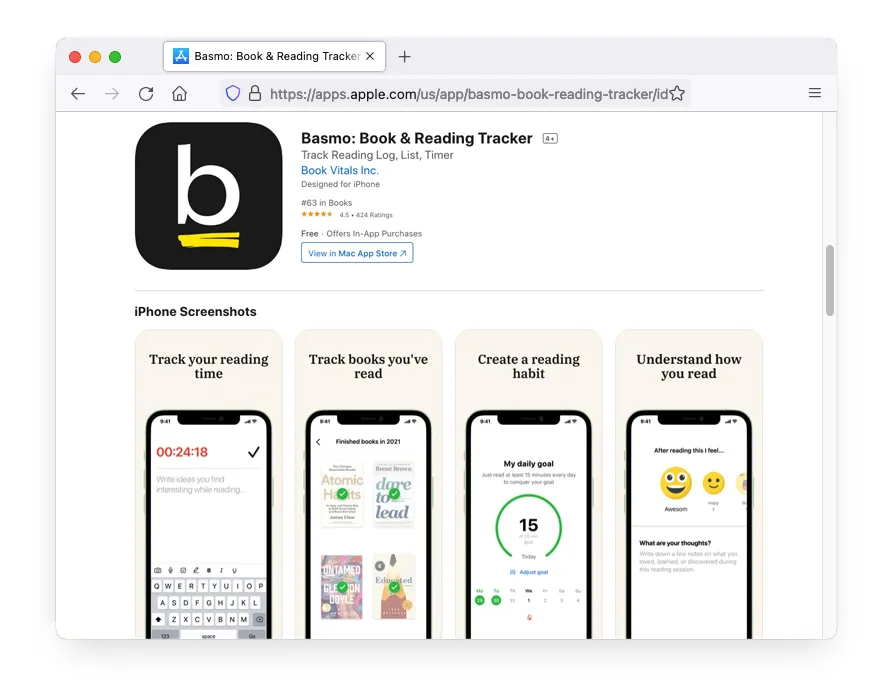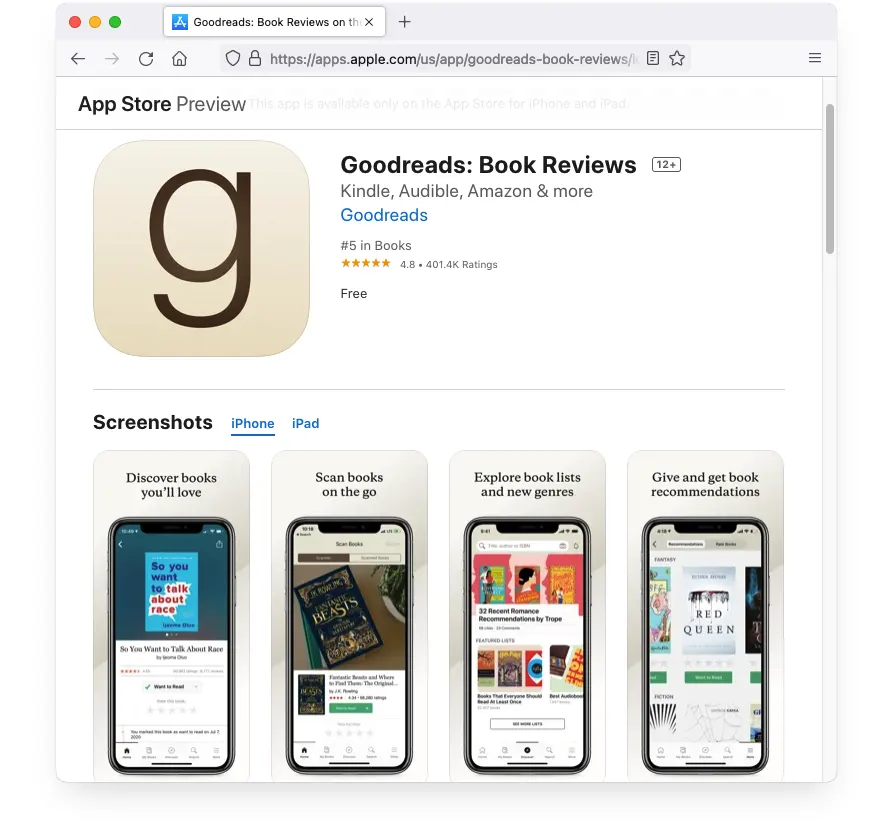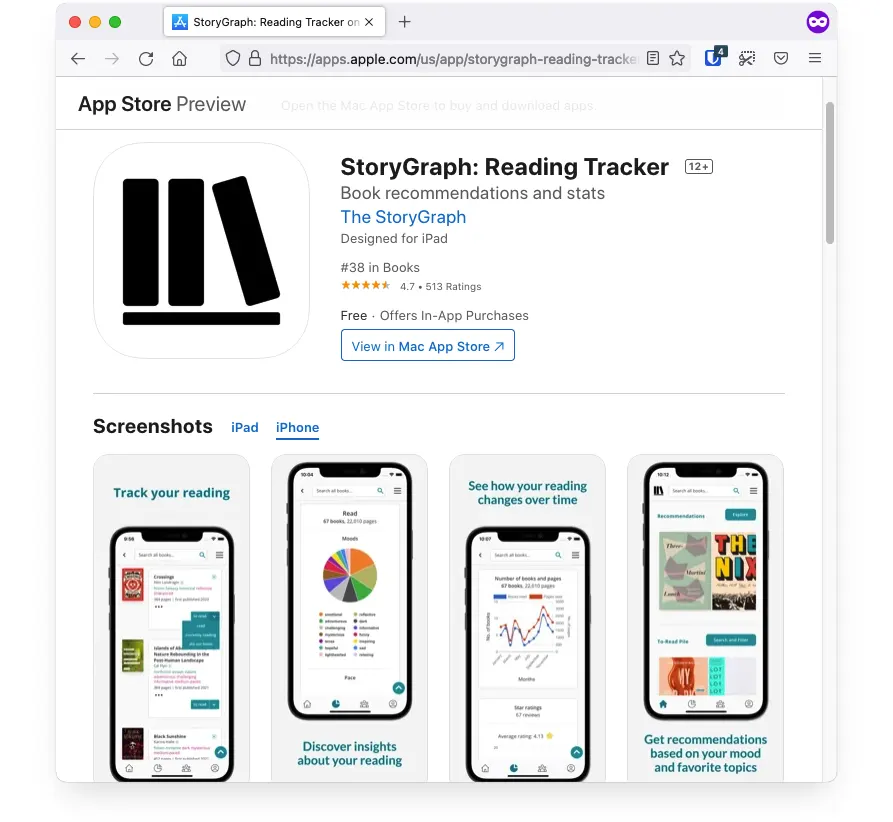Having healthy reading habits can change this hobby into a more productive, rewarding, and efficient activity. While these healthy reading habits may have somewhat different definitions from one reader to another, they mostly include having a reading schedule, some achievable reading goals, and a mindful approach to reading.
An often overlooked aspect of reading is keeping a reading log. What is a reading log and how to make a reading log to improve your reading experience? We will be exploring all of that below for your benefit.
In order to properly understand and learn how to create the perfect reading log that suits all your needs, the first thing to do is find out what the exact reading log meaning is.
What is a reading log?
By its definition, a reading log is a form of keeping a record of all the reading a person does, either as a reading journal, a simple list of books, or a digital log through which several details about the reading are saved and tracked.
Through reading logs, we keep track of the exact books we read, how many pages we read, how long it takes us, and pretty much any other information about our reading that we find necessary.
Even though they are mainly used in school and help the teachers (and parents) track the students’ reading, the habit of keeping a log of the reading activity outlasted the school years for many reading enthusiasts.
What kind of reading logs are there?
While reading logs can be quite different from one reader to another, depending on the assignment they are required for or the reader’s personal goals, two main categories of reading logs do exist:
- Pen and paper: pretty self-explanatory, one of the ways you can choose to create a reading log is to simply write down all the relevant information on a piece of paper. Whether it’s a blank sheet of paper or a whole notebook, this is usually a very common method for creating reading logs.
- Digital: whether it’s within an app like Basmo, a Notion template, an online spreadsheet, or a simple document on your laptop, digital reading logs are quite useful these days for several reasons: convenience, more editing options, safer storage.
Do I need a reading log?
Whether or not you need a book reading log is a matter of personal choice and preference more than anything else. Some readers love tracking their reading and having tangible proof of all the reading they’re doing, while others see it as a pointless, time-consuming task. The only way to decide if you do need to keep a reading log is to have a look at the benefits and possible drawbacks and decide for yourself.
Benefits of having a reading log for adults
Here are the most relevant advantages readers can benefit from if they decide to use a reading log.
- They bring order and structure to your reading: while reading is fun and entertaining, people who take it a little more seriously will all agree that reading in a more organized fashion (using reading lists, a reading schedule, daily goals, and reading logs as well) makes the experience a lot more rewarding. By having this mindful approach, you keep yourself accountable for the amount of reading you make and for meeting your own goals.
- They can motivate you to read more: accountability can be a great motivator if you’re struggling with the amount of reading you do and you’re constantly dreaming about reading more. Having tangible proof of the exact amount of reading you do can be a wake-up call for some, and it can help you realize how much more you could be doing.
- A reading log can look however you want it to look: using a reading log as an adult comes with the huge benefit of giving you complete freedom in regards to the way the reading log looks, how it is structured and what information it consists of. You can choose a predefined reading log template, or create your own. And of course, if you choose to keep your log on a piece of paper, in a dedicated reading app, or in a spreadsheet on your laptop or PC, you’re free to choose whichever you like the most.
- Having a list of books you already read can be useful: probably one of the most useful features of a reading log is the fact that it contains the complete list of books you’ve already read or tried reading (and never finished). Especially if you use a digital reading log, this will make it extremely easy to search for book titles, group them in certain ways to see how many books you read from each author (for example), and thus make sure that you don’t buy the same book twice.
Drawbacks of using a reading log
Nothing is perfect in life, and reading logs are no exception. A decision to use or not to use a reading log should only be made once you’ve become fully aware of the drawbacks of using one.
- It takes time: even though keeping a reading log is not a particularly time-consuming activity, it still requires a bit of time and effort. If you are passionate about reading, feel no need to additionally motivate yourself, and feel like your reading habits are already healthy and organized enough, keeping a reading log may be redundant.
- Teaches you to see reading as a task: if you used reading logs in school and were constantly pressured to keep reading things you disliked only because your teacher would eventually grade you based on your reading log, chances are your mindset could be a little toxic towards the reading log. You may feel pressured to read things just to populate your reading log, and this, in time, will make you love reading a little less.
- You may realize you’re using it a lot less than you initially thought you would: we all get excited about new projects at first. The thing about reading logs is that they are useful only if you make them useful. If you just keep a reading log for the sake of simply having one, you will soon realize it’s a waste of time. To make it useful, you need to constantly analyze it, use it to determine what you can improve regarding your reading habits, and actively keep track of the books you read.
Ultimately, deciding whether you need a reading log or not is completely up to you and the way you evaluate your reading and your habits.
How to make a reading log?
If you decide that using a reading log is the right thing for you, you should know that this is not a very difficult task, as long as you follow a couple of easy steps to achieve your goals.
Here’s the best way to create your reading log:
1. Know your assignment/motivation
Whether your reading log is a school assignment, a mandatory book club assignment, or a self-imposed task to better your reading habits, the very first thing you need to do is to understand why you’re doing it. Know what your personal motivation is or read the assignment carefully to make sure you’re following all the rules and meeting all the requirements.
Since we’re on the subject of motivation, having reading goals is a great way to ensure that you stay motivated to read as much as possible. Setting and meeting your reading goals is easy, fun, and effective if you use Basmo, the most complete reading tracking app out there.
With just a couple of taps, you can set daily or yearly reading goals within the app.
Whether you want to read for a certain number of minutes every day or want to read a certain number of books within a year, Basmo gives you the option to set realistic goals.
Not only that, but you will also be able to track your progress towards meeting them.
2. Create your reading log template
Whether it’s for the sake of the task you’re facing or for your personal records, a reading log will need to contain several pieces of key information about your reading material, like the book name, author, genre, year of release, how many pages you read in each session, and other relevant data. Whether you’re creating your own template or using a predefined template, you will need to make sure you can include all this information as dictated by your assignment or your own self-imposed rules once you start populating it.
Speaking of predefined templates, it’s important to know that you can even get a printable book reading log template online. Not at all surprisingly, some of the best and most complete ones can be found on Pinterest, but there are some other pretty interesting ones to take into account:
- The Everyday Reading printable log
- The 101planners printable reading log
- The Templatelab reading logs printable logs
3. Do your reading – actively
The next natural step is to start doing your reading. Ideally, if you are reading and also using a reading log, you should engage in active reading sessions. Since your reading also has an associated task, you should make an extra effort to understand the texts, retain as much information as possible, and identify the important information that should be included in your reading log.
One thing you can do to take your reading to the next level is to use a reading tracking app like Basmo.
With Basmo, you can schedule your reading sessions to make sure you have some time set aside for your reading.
You can choose the exact days and times of day to make sure reading doesn’t overlap with any of your other activities, and you will also be reminded of any upcoming reading sessions through notifications.
4. Populate it as you go
While some information can be added to the reading log before you even start reading, depending on the type of log you use and the task or personal goal that is associated with it, you will also need to populate the log with information as you read.
With Basmo, your reading log will be partly filled out automatically.
As you finish reading books and mark them as finished in the app, they will be automatically moved to the book collection that consists of all the books you’ve read.
5. Make additional notes
Sometimes going above and beyond makes all the difference in the world. Don’t limit yourself to your initial task requirements. If you find other important information while you read and you think you might find it useful later, don’t shy away from writing it down in your reading log.
Taking additional notes shouldn’t limit you to the reading log you’re working on though.
Taking notes with Basmo for example is very easy and facile.
You can take notes directly on your smartphone within the app, while a reading session is ongoing.
Not only that but your notes can be easily formatted, colored, and organized however you see fit.
6. Store your reading log safely
Unless you’re using a digital version of the reading log, it’s important to make sure you store it properly and don’t end up losing it.
Another reason Basmo is a great tool when it comes to keeping a reading log is the fact that it helps you keep customizable reading lists.
You can easily create, populate and modify them as you go. Just through a couple of taps, you will be able to move books from one list to another, for example from the unfinished book collection to the one where all your finished books are stored.
Give Your Reading Experience
An Extra Boost With Basmo
Track the books you read, monitor the time you spend reading and keep notes on your reading habits and how it makes you feel. You can set yourself targets for the time you spend reading and you can get notified whenever you’re behind on your reading time.
What should a reading log consist of?
Depending on the purpose behind your reading log, the way it’s built can differ significantly from one reader to another. A couple of things are absolutely essential to its core purpose though, and those are:
- Book’s name
- Author
- Pages read (per session, or the total number for the book)
- Time spent reading (per session or in total for each book)
If you’re looking for an easier way to track your reading though, you should know that Basmo offers quite a complete solution. With Basmo, you can create reading lists, which include a “Finished” book collection, which can act as a pretty good start for a reading log.
On top of this, all the relevant information about the books you read (authors, book names, release dates) is already saved within the book in the app, which means most of the information you would normally have to write down by hand in your reading log is already made available if you use Basmo.
Not only that but you can also see pretty fascinating statistics in the app, which show your reading speed, how much time you spend reading every day, how many pages you read, and much more.
This can help you keep track of relevant information for your reading log or even simply replace it altogether with this digital version.
What are the best digital reading logs?
Since digital reading logs are gaining more and more popularity and for good reason, let’s have a look at a couple of solutions you can use. The final choice is going to be ultimately yours, but you still need to be able to make an informed decision.
Reading tracking apps
These apps designed to aid the modern reader are amazing little wizards you can simply install on your smartphone or mobile device of your choice.
Here’s our top three choices for creating reading logs with tracking apps.
Basmo

By far the most complete, and best overall solution for all your reading needs. From reading lists, notes taking features, journaling, and feelings tracker, to the combination of these features that can help you create the ultimate digital reading log, Basmo has it all.
Goodreads

Even though most readers use it for different purposes, Goodreads can also be a relatively good choice for keeping a reading log. While the user experience is not something Goodreads seems to have worried about in a very long time, the platform does provide a lot of interesting features which can make keeping a reading log a good experience.
The Storygraph

Delivering interesting stats and insightful information about your reading habits, this app can also act as a very well-performing digital, automatized reading log.
Spreadsheets/Google Docs
Another very common solution for creating your ultimate reading log is using spreadsheets. Whether you do it directly on your PC or laptop or create and edit it in the cloud with apps like Google Docs, spreadsheets can be a great solution for reading logs.
Reading log spreadsheets are easy to create and edit, they are infinitely customizable according to your needs and preferences, and they are a lot harder to lose than their paperback version.
If you’re thinking of using a Google Docs spreadsheet template for your reading log, here are the best three templates we’ve come across:
Notion templates
Using a Notion book tracker template, for example, can turn into a very effective reading log. Since a book tracker is generally used for similar purposes, the Notion templates can turn out to be extremely useful as reading logs.
Final thoughts
Now that you have a complete answer to the question “What is a reading log?” and you also know how to make a reading log, it is entirely up to you to decide whether you need one or not. If you do, remember to also take advantage of all the amazing things Basmo has to offer.







